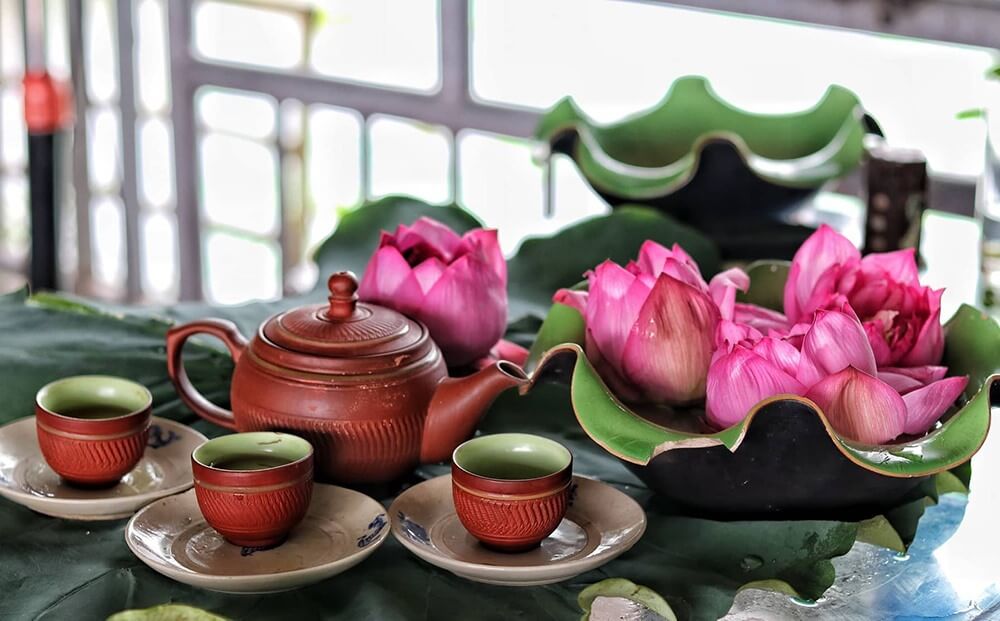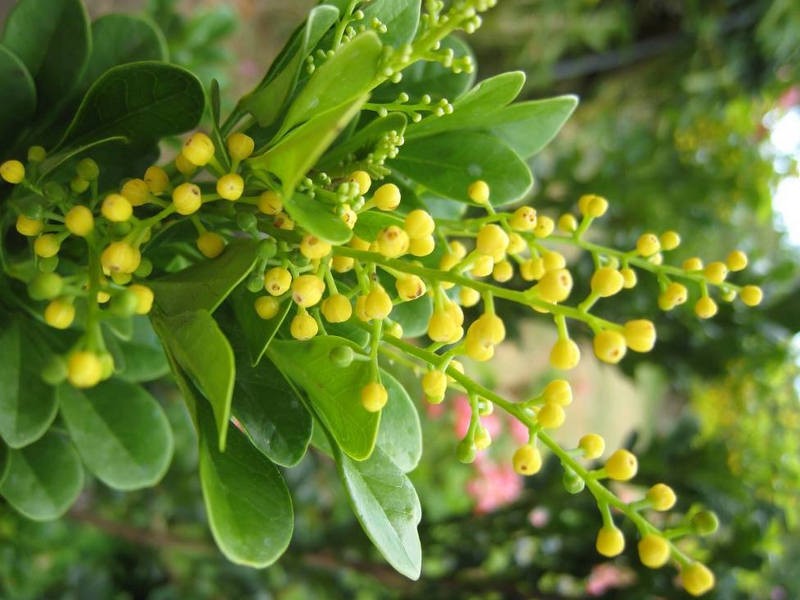Floral-scented tea is a long-standing and delicate part of Vietnamese culture. For centuries, this art has been preserved through generations. Scented tea is not just a beverage but a harmonious blend of nature and human craftsmanship, resulting in a refined product steeped in tradition. This article explores the floral tea scenting technique, the flowers commonly used, and the benefits of floral-scented tea.

1. What is Floral-Scented Tea?
Floral-scented tea is tea infused with natural flower fragrances. This process allows the tea to absorb the scent, creating a unique and distinctive flavor. Each type of flower gives the tea its special aroma and taste, offering a rich and enjoyable experience for the drinker.
2. Common Flowers Used in Tea Scenting
2.1. Jasmine

Jasmine is the most common flower used in tea scenting. Its light and captivating fragrance easily permeates and deeply infuses the tea leaves. To scent tea, fresh jasmine flowers, still dewy from the morning, are selected. The flowers are spread over dried tea leaves and then stored together for a set period, allowing the tea to fully absorb the fragrance. This process is often repeated several times to achieve the desired aroma.
2.2. Lotus

Lotus flowers impart a pure, gentle, and slightly sweet fragrance. Lotus-scented tea is not only delicious but also carries deep spiritual significance in Vietnamese culture. Lotus tea is usually made by placing tea buds inside a lotus flower that has bloomed overnight. The tea is removed the next morning and dried. This method ensures the tea is fully infused with the natural scent of the lotus without losing its original flavor.
2.3. Chrysanthemum

Chrysanthemum is often used in tea scenting for its cool and subtle fragrance. Chrysanthemum tea is known for its cooling and detoxifying properties, making it a popular choice during summer. The combination of chrysanthemum’s aroma with the tea creates a pleasant experience, helping to relax and calm the drinker. The dried chrysanthemum flowers are mixed with tea and stored together to allow the tea to absorb the scent.
2.4. Aglaia
Aglaia flowers have a light and refreshing scent, making them an interesting choice for scented tea. While not as common as jasmine or lotus, aglaia-scented tea provides a special and unique experience.
3. The Tea Scenting Process
3.1. Selecting Tea and Flowers
The quality of tea and flowers determines the final flavor of the product. Green tea or oolong tea, with their rich flavors, are usually chosen for scenting as they blend well with floral fragrances. The flowers must be fresh, free from pests, and often picked early in the morning when their scent is strongest.
3.2. Scenting Process
The scenting process involves several meticulous steps. First, the flowers are evenly spread over dried tea leaves. The tea and flowers are then stored together in a sealed space where temperature and humidity are carefully controlled. The scenting time varies depending on the type of flower and tea, ranging from a few hours to several days. Once complete, the tea is sifted to remove the flowers, leaving behind the fragrant tea leaves.
3.3. Controlling Temperature and Humidity
To prevent mold or loss of fragrance, temperature and humidity must be carefully managed during the scenting process. Too much heat can diminish the flower’s fragrance, while excessive humidity can harm the tea’s quality.
3.4. Repeating the Process
In many cases, the scenting process is repeated multiple times to achieve a richer fragrance. Fresh flowers are added with each repetition to intensify the scent.
4. Benefits of Floral-Scented Tea
4.1. Unique Flavor
Floral-scented tea offers a unique flavor that combines the richness of tea with the delicate aroma of flowers. This sophisticated blend creates a rich and enjoyable tea-drinking experience.
4.2. Health Benefits
Floral-scented tea is not only fragrant but also offers numerous health benefits. Green tea, oolong, and other types of tea are rich in antioxidants, which help prevent aging and protect the body. The fragrance of flowers also has a calming effect, reducing stress and promoting relaxation.
4.3. Suitable for Any Occasion
Floral-scented tea is versatile and can be enjoyed on various occasions. Whether it’s a peaceful morning, a relaxing afternoon, a friendly gathering, or a formal event, floral-scented tea is always a perfect choice.
5. Tips for Using and Storing Floral-Scented Tea
5.1. Proper Storage
To retain its fragrance, floral-scented tea should be stored in an airtight container in a dry, cool place. Avoid exposing the tea to direct sunlight or humid conditions.
5.2. Using the Right Amount
When brewing tea, use the right amount to ensure a balanced flavor. Using too much tea can result in an overpowering fragrance, which may not be pleasant.
5.3. Enjoying Tea the Right Way
Enjoying floral-scented tea should be done in a quiet, relaxing environment. Sip the tea slowly to fully appreciate the flavors of both the tea and the flowers. This is not just a way to drink tea, but a way of life, creating moments of peace in a busy world.
Conclusion
The traditional floral tea scenting technique is a refined art that requires patience and precision. Floral-scented tea is not just a simple drink but a symbol of Vietnamese culture and the art of tea appreciation. When enjoyed properly, floral-scented tea offers a delightful experience that is both sophisticated and deeply rooted in tradition. Take time to explore and enjoy floral-scented tea to fully appreciate the essence of this art form.